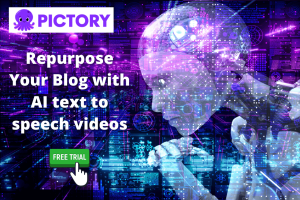Artificial Intelligence (AI) has become a buzzword in the tech industry, promising to revolutionise various sectors, from healthcare to finance, and from transportation to entertainment. However, as with any powerful tool, AI also has a dark side. This article delves into the potential threats that AI poses to Cybersecurity, providing a comprehensive understanding of this complex issue.
Understanding AI and Its Potential
AI refers to the simulation of human intelligence processes by machines, especially computer systems. These processes include learning, reasoning, problem-solving, perception, and language understanding. AI has the potential to automate routine tasks, provide predictive analysis, and even make decisions based on vast amounts of data.
The Intersection of AI and Cybersecurity
AI has found a significant place in the realm of Cybersecurity. It can help detect and respond to cyber threats more efficiently and accurately than traditional security measures. However, the same technology can also be exploited by cybercriminals to launch sophisticated attacks.
AI in Cybersecurity: The Good Side
AI can enhance Cybersecurity in several ways:
- Threat Detection: AI can analyse vast amounts of data to identify patterns and detect anomalies that may indicate a cyber Threat.
- Incident Response: AI can help in automating responses to identified threats, reducing the time between Threat detection and response.
- Predictive Analysis: AI can predict future attacks based on historical data and trends.
AI in Cybersecurity: The Dark Side
While AI can bolster Cybersecurity, it can also be weaponised by cybercriminals. Here’s how:
- Automated Hacking: AI can automate the process of finding vulnerabilities in a system and exploiting them.
- Sophisticated Phishing Attacks: AI can generate convincing fake emails and websites to trick users into revealing sensitive information.
- Deepfakes: AI can create realistic fake audio and video content, which can be used for disinformation or fraud.
The Threat Landscape: Case Studies and Statistics
Several recent incidents highlight the potential Threat of AI to Cybersecurity.
Case Study 1: The Twitter Bitcoin Scam
In July 2020, a major Twitter hack resulted in the accounts of several high-profile individuals, including Barack Obama and Elon Musk, tweeting requests for Bitcoin donations. The attack was enabled by AI-powered social engineering tactics.
Case Study 2: Deepfake CEO Fraud
In 2019, a UK-based energy firm was defrauded of £200,000 when its CEO was tricked into transferring funds by a deepfake audio of the company’s chief executive. This incident highlighted the potential for AI to facilitate fraud.
Statistics
According to a report by Cybersecurity Ventures, cybercrime will cost the world $6 trillion annually by 2021, up from $3 trillion in 2015. This rise can be partly attributed to the increasing sophistication of cyber attacks, enabled by AI.
Addressing the Threat: Strategies and Solutions
Addressing the Threat of AI to Cybersecurity requires a multi-faceted approach:
- Regulation: Governments and international bodies need to establish regulations to prevent the misuse of AI.
- Education: Users need to be educated about the potential risks associated with AI and how to protect themselves.
- AI for Good: Cybersecurity professionals need to leverage AI to enhance their capabilities and stay ahead of cybercriminals.
Conclusion
The Threat of AI to Cybersecurity is a Reality that cannot be ignored. While AI has the potential to revolutionise Cybersecurity, it can also be weaponised by cybercriminals to launch sophisticated attacks. Addressing this Threat requires a combination of regulation, education, and the proactive use of AI for good. As we continue to embrace AI, we must also be prepared to face and overcome its dark side.





